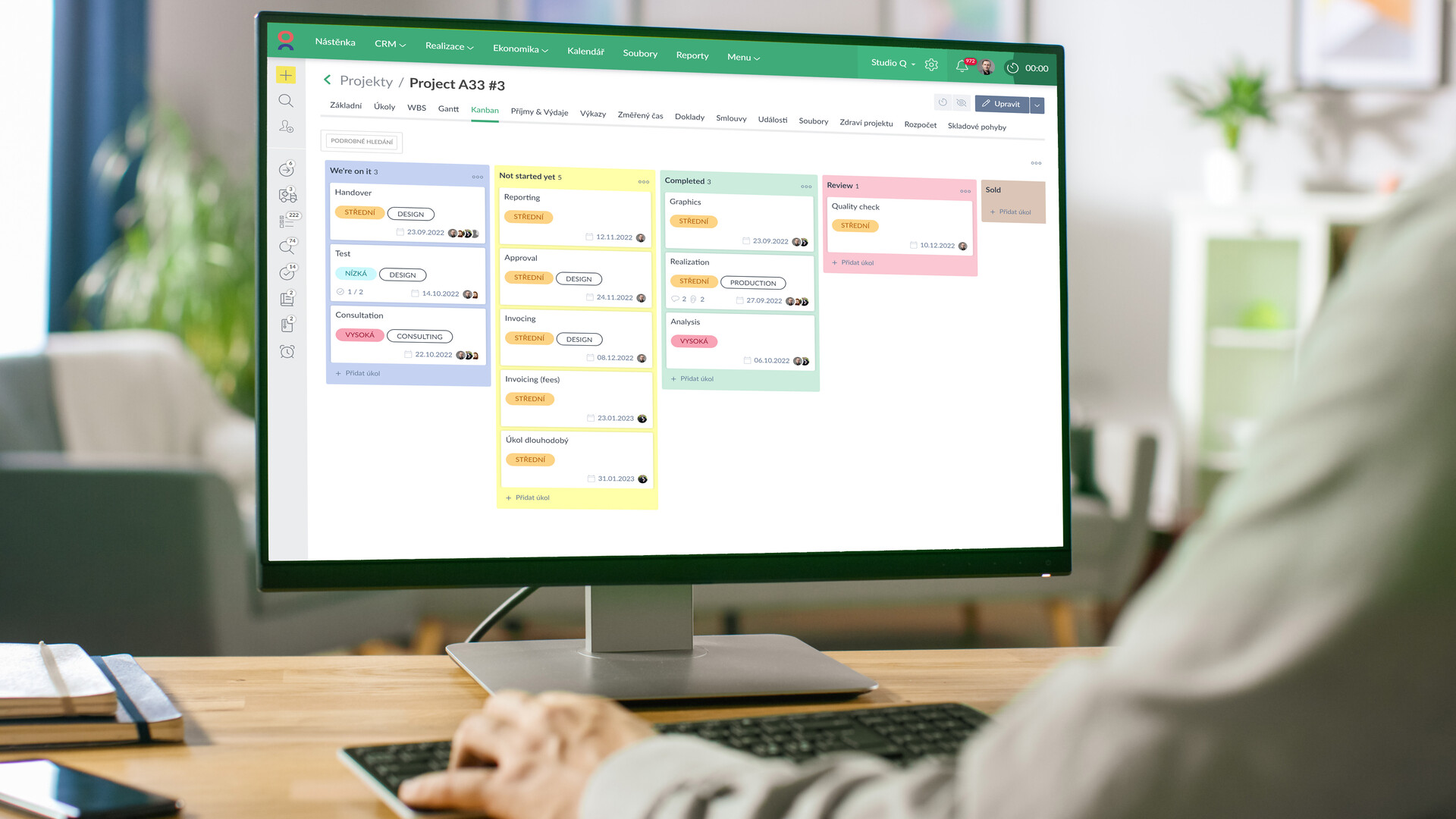ChatGPT was easily the most hyped tech in 2023, promising to supercharge productivity while threatening to render some jobs redundant. But did it live up to expectations?
🎓 CAFLOU® academy is brought to you by CAFLOU® - 100% digital business management software
We’d say the tech’s potential hovers around a healthy medium – used right, it can improve the way a lot of us work. But it’s not the job killer people feared it would be, nor a magic bullet for drastically improving productivity – not yet, at least.
If you plan to use ChatGPT, it’s helpful to take inspiration from how people already use it. You’ll get a better understanding of what it can and can’t do, making it easier to hit the ground running. And to help you get started, we’ve compiled 25 ChatGPT use cases for small businesses that you can try right now.
25 ChatGPT use cases for small businesses
For improving personal productivity
Use ChatGPT to make your day-to-day tasks more efficient.
1. Writing and proofreading emails
Give ChatGPT some context and ask it to help you craft a relevant email. At the very least, you should get a boilerplate template that you can adapt accordingly.
Example: Help me write an email to my line manager requesting two weeks off using my vacation days. Keep the tone formal but warm, and specify that I’m available to help perform any tasks beforehand to support the team while I’m away.
Similarly, you can have ChatGPT proofread your emails and suggest improvements. It can even rewrite your emails per your instructions, like if you want the tone changed.
Example: I am replying to this email “[insert received email],” and my response is as follows “[insert drafted response]”.
Can you help my email sound friendlier and suggest anything else that I should mention or change?
2. Summarizing documents
You can copy and paste an entire document’s contents into ChatGPT, and then proceed to ask ChatGPT to summarize it. ChatGPT Plus even lets you upload documents directly.
Example: Summarize the following text, and create subheadings in your summary that cover the highlights.
3. Creating presentations
Use ChatGPT to help you outline presentations and identify key talking points for your subject matter. You can also use it for more nuanced help, like to suggest ideas for visual aids or to sort information into a table. Plugins like PlusDocs even let you use custom GPT to create formatted presentations with AI.
Example: Outline a presentation for a team training session on project management methodologies. Include sections on project initiation, planning, execution, resource management and allocation, performance monitoring and evaluation, and closure. Incorporate interactive elements and visual aids to engage the team and reinforce key concepts.
For project management
Need help with the more tedious aspects of project management? Let ChatGPT take over some of the heavy lifting, like:
4. Generating work breakdown structures
ChatGPT can help you generate work breakdown structures (WBS), even if you don’t have a starting point. It can give you a starting point for your project, like if you’re running a promotional virtual event or maybe a construction project:
Example: List the tasks and subtasks required for a [project type] project.
Then, you can ask ChatGPT to break these tasks down further
Example: Break each subtask down further to provide third (and, if necessary) fourth-level subtasks.
Alternatively, you can ask ChatGPT directly to outline a WBS for a project and then tweak it accordingly.
Example: Generate a work breakdown structure for a home construction project. We are constructing a house with {details like number of bedrooms, floors, basement or no basement, etc.}.

5. Organizing and outlining workflows
Need help organising your team’s workflow? Ask ChatGPT to suggest workflows based on your available resources and the tasks you need to complete.
Example: We need to run a Google Ads campaign with Facebook retargeting ads. Our team includes graphic designers, copywriters, pay-per-click (PPC) ad specialists, a marketing head, and a product specialist. Outline a complete workflow for launching our campaign, including keyword search, audience research, ad writing, ad configuration, optimising reporting and performance evaluation, and other tasks you consider necessary.
6. Creating documentation (SOPs, risk assessment templates)
Use ChatGPT to reduce the time it takes to create documentation, like SOPs or risk assessment reports. Give it as much context and information as you can, and it’ll output documents that you can tweak and improve.
Example: Create an SOP document for handling customer support queries in a D2C ecommerce store. Include procedures for ticket triage, customer communication standards, resolution steps, and feedback collection. Address common scenarios such as returns, refunds, order status requests, and product inquiries.
Example: Generate a risk assessment template for a software development project. Outline categories such as technical, operational, and external risks. Include columns for risk description, likelihood, impact, mitigation strategies, and responsible parties. Offer guidance on how to evaluate and prioritise risks.
7. Creating project plans and task lists
Need help drafting a project plan? Share as many specifics as you can with ChatGPT, like the type of project, available resources, goals, etc., and ask it to draft an initial project plan.
Example: Design a project plan for organising a corporate conference. Specify tasks such as venue selection, budgeting, marketing, attendee registration, managing guest speakers, logistics planning, and post-event evaluation. Provide estimated durations for each task and identify critical dependencies.

For customer service
ChatGPT’s versatility makes it a promising tool for supporting customer service functions. Some ways you can use it to enhance customer service include:
8. Making an interactive knowledge base
Help your customer service reps resolve queries faster by creating a living, breathing knowledge base. If you train ChatGPT on your internal documentation and previous interactions, your agents can now ask it questions relevant to its custom knowledge base. This means no more sifting through various documentation to find answers or information.
9. Create custom customer service chatbots
ChatGPT has opened its API up to the public, so you can use an API key and development environment (a virtual workspace for developers to write and test code) to create a custom customer service chatbot.
You can train the chatbot using custom prompts, which you can model on real customer service interactions in your business, like from your live chat logs or email support requests. Learn more about creating your own ChatGPT customer service chatbot here. Alternatively, if you don’t want to code your own chatbot, you can use a ChatGPT bot service like Sendbird.
10. Analyze customer interactions
Want a second opinion on what went wrong in a specific interaction, or what went right? Ask ChatGPT to analyse logs from customer interactions (e.g., ones from live chat or social media DMs) to provide insights into sentiment, the effectiveness of the resolution, etc.
Example: Evaluate the following live chat interaction where a customer reported an issue with a product. Assess how well the representative addressed the problem and highlight positive aspects of the interaction. Also, if necessary, suggest ways that the representative can improve their service in future.
11. Train new agents with simulations
Just like you can build an interactive knowledge base, you can also train ChatGPT on previous customer interactions to simulate new scenarios. These scenarios can help you quickly onboard new agents by engaging them in simulated customer interactions.
12. Create templates to answer FAQs
Use ChatGPT to create templated answers for commonly asked questions – you can also save these answers in a text shortcut tool to make it easy for agents to pull them up as needed.
Example: I’ve provided you with our company’s live chat interaction logs. Create an FAQ guide with common technical issues reported in our live chat conversations. Ensure the responses are clear, concise, and reflective of the solutions provided by the representative.
For content management
Help your content team supercharge their productivity with these ChatGPT use cases:
13. Generate content ideas
Need content ideas for your business, or a particular topic? Give ChatGPT some context and ask it for content ideas.
Example: We run a small home construction company in {area}. Can you give me some content ideas relevant to our target audience of first-time home buyers?
14. Repurpose long-form content
Producing unique, long-form content isn’t one of ChatGPT’s strengths – but repurposing it is. Use ChatGPT to chop up long pieces of content or to adapt it into different formats, like social media posts.
Example: I’m sharing the text of an article about {title} below. I want to share a link to this article on LinkedIn with a caption that introduces the article and encourages people to click the link and read more. Suggest five captions that meet this criteria.
15. Rewrite content
Maybe you need help proofreading your content, or maybe you want to see what it’ll look like in a different tone or format. ChatGPT can quickly rewrite your content, giving you different perspectives without spending too much time editing your work.
Example: I’m sharing the text of an article that discusses solar technology. I would like you to simplify this article’s language and style to make it easier for 6th graders to understand.
16. Translation and localisation
While many translation tools already exist, the massive size of ChatGPT’s training data makes it more effective at understanding context. This means that, with the right instructions, you can use ChatGPT to translate content and localise it to specific regions.
Example: I have translated this sentence in English: “{Insert sentence}” to French as: “{Insert sentence in French}. Suggest alternative translations for this sentence in French.
Example: Identify grammar errors in the following Spanish text: {Insert text in Spanish}.
Learn more about using ChatGPT for localisation here.
For data management
Cleaning, organising, and making sense of data are generally tedious tasks. Fortunately, with the right prompts, ChatGPT can handle a lot of the heavy lifting for you.
17. Preprocessing structured data
Use ChatGPT to preprocess structured data by removing unwanted information, like special characters or repetitive information.
Example: Remove the following special characters from the text below: & @ % *
Example: Remove duplicate entries from the following data set:
18. Extract specific text data or keywords
Example: Extract sentences from the following text that contain the words “automation,” “business automation,” “artificial intelligence,” and “AI.”
19. Sentiment classification with labels
Example: I will provide you with a list of product reviews. I want you to classify the sentiment of each review as “positive,” “negative,” or “neutral.”

20. Identifying trends
If you feed ChatGPT data, then asking it the right questions can help you identify trends.
Example: I’m sharing performance data for our sales process over the past three quarters with you. Can you draw a graph of deals closed over time?
Example: I’m sharing some customer feedback with you. Can you identify similarities in the nature of their complaints? Then, categorise the most common types of complaints into five categories and draw a bar graph that illustrates the frequency of each complaint.
21. Summarizing data
Example: I am sharing some market research and trends reports relevant to {product}. I need you to interpret these reports and generate a summary focusing on improvements we can make to {product} that reflect this research.
For developers
22. Generating code snippets
You can use ChatGPT to create code snippets or to write functions to help you save time, like so:
Example: Generate code for sorting arrays in Python.
Alternatively, you can even provide details of your problem and ask it to generate relevant code. You might need to tweak and debug the code a bit before it works, but getting a boilerplate can really save you time.
Example: I need a code for Selenium (Python) that does the following: the script will read a .txt file called “links.txt” containing URLs. The script will check each page’s title to see if it says “Page not found”. If a page’s title is “Page not found”, then the code will write the URL in another .txt file called “broken links”.
23. Debugging codes
Example: {Insert code}. The code above isn’t running – it’s in {programming language}. Can you give me some suggestions of what the error might be?
Example: Can you give me some test cases for the following code: {insert code}.
24. Optimizing code
Example: Can you suggest alternative codes for the following function to optimise its performance?
25. Translating code from one programming language to another
Example: Can you convert the following Python code to C++? Also, explain the logic of the code and write its pseudocode, so I can verify that you’ve understood the Python code.
Example: Interpret the following function coded in C++ and code a function with the same logic in Pearl.
26. Research and learning
Need help understanding an error you’re getting, or maybe you want to find out if a particular library can help you solve a problem? Take advantage of ChatGPT’s vast knowledge base.
Example: Can you explain the following error to me: {insert error from compiler or interpreter}
Example: Is there a library with a function that does {desired task}?
Example: Is there a library with functions that can help simplify my code?: {insert full code}
Instructing ChatGPT: Understanding prompt engineering
Prompt engineering is the discipline of crafting precise prompts to get your desired output from ChatGPT. While there are comprehensive resources and even courses to help you learn prompt engineering, we’re going to give you a quick overview of the fundamentals.
So, here are some factors to consider when writing your prompts:
Precision. The prompt “Can you help me generate email templates for an upselling campaign?” leaves a lot up to interpretation, whereas you can get more precise results from a prompt like:
“I am an ecommerce store owner looking to send customers emails a week after their first purchase. In these emails, I want to suggest related products that the customer might be interested in and offer them a 20% discount off their next purchase as an incentive. Generate five email samples for this scenario.”
Context. Let’s refer back to the example above – giving context like the nature of your business (ecommerce store), the incentive you want to offer, and what purchases you’re trying to encourage (products related to first purchase) helps ChatGPT generate more relevant responses.
Role. Specifying a role for ChatGPT can help you fine-tune its output. For example, by including “You are a data analyst” or “You are a financial expert” in your prompt. However, remember that ChatGPT can still make factual errors – so be sure to check the accuracy of any responses.
Tone and style. You can simply specify tones like “casual” or “friendly”, or you can get more specific with the style of output with something like “explain it to me like I’m a sixth grader.”
Length. Specifying a word count/length can give you a better or worse output, depending on the context, so it’s worth experimenting. A shorter word count might produce a more concise response, whereas longer outputs may be needed when you need in-depth explanations.
These are some general guidelines to help you refine your prompts; the key to getting the best output is to keep tweaking your prompts until you get what you need. ChatGPT also lets you purchase “Premium” prompts, but a casual test by Ahrefs suggests that these prompts won’t necessarily produce better outputs. Still, it’s interesting to see how prompt engineering has tuned their outputs with this general structure:
What about ChatGPT alternatives?
While ChatGPT is currently the most popular AI tool in its class, there are some promising alternatives (some with useful niches) worth considering, like:
Bing Chat. While it uses the same large language model (LLM) as ChatGPT, Bing Chat also crawls the web (through the Bing search engine) to find answers to your questions. It also typically cites sources and suggests follow-up prompts.
Gemini (by Google). Gemini (formerly known as Bard) is Google’s response to ChatGPT, and while it’s not as popular as the latter, Gemini holds its own. It’s also good at answering maths and logic-based queries.
CodeX. Like ChatGPT, CodeX is also by OpenAI – but it’s specifically tuned for developers. CodeX can write and debug code, help you identify problems and generate test cases, etc.
Copilot. Microsoft designed Copilot to be a generative AI-powered assistant for Microsoft users – it’s free to use on the web, Microsoft Edge, and Windows. You can use it for desktop-related tasks like turning your volume up or adjusting brightness, and for web-based tasks like summarizing an article.
Summary: ChatGPT for small business
ChatGPT isn’t a magic bullet for supercharging productivity, but when used right, it can definitely help small businesses transform the way they work. From simple tasks like generating email responses to more sophisticated use cases like building custom chatbots, ChatGPT is exceptionally versatile – and best of all, it’s user-friendly and free to use.
The best way to figure out what ChatGPT can do for your business is to get your hands dirty. Try some use cases out (like the one we’ve listed) and keep tweaking prompts until you get what you need. Encourage your team to use it too, and they’ll gradually discover how to fit it into their workflows.
<< Back to all articles in Caflou Business Management Academy